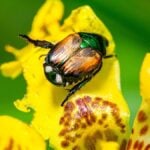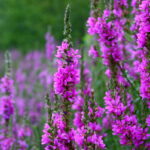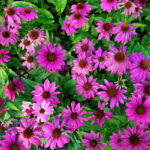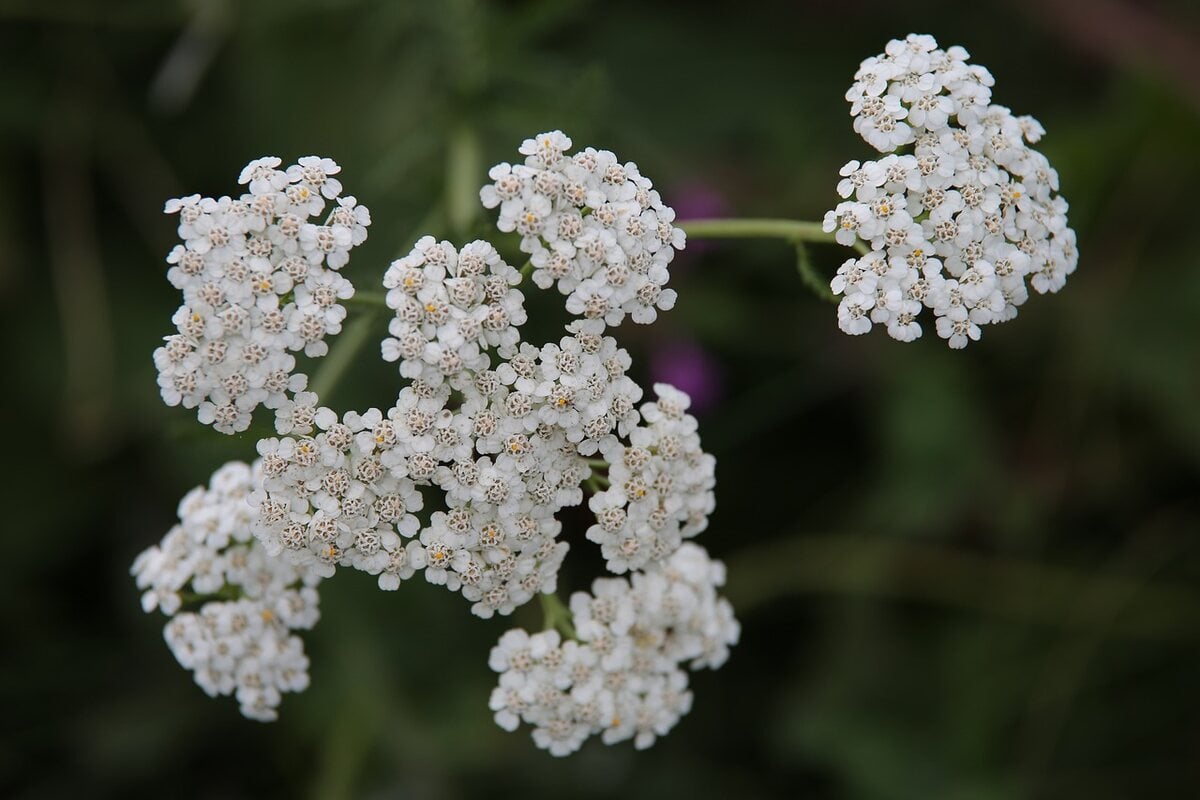
Nebraska is home to over 1,500 species of native plants. To help you bring a piece of this natural beauty into your own backyard, we have compiled a list of the best native plants in Nebraska.
So, let’s explore these local wonders together, so you can live amid the Planters’ State’s diverse ecosystem.
Best Flowering Perennials for Nebraska
1. Dotted Blazing Star (Liatris punctata)
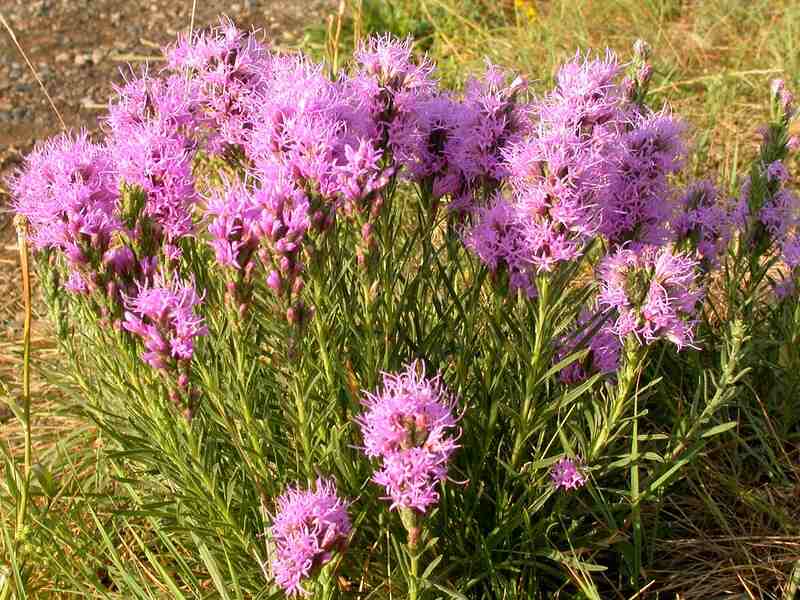
The dotted blazing star can be a contradiction: It is popular for its beauty (large rose-lavender flower heads), but it is also among the toughest flowers in all soils and temperatures. Dotted blazing stars are also drought-tolerant and easy to care for, making them a beautiful and low-maintenance addition to your landscape.
- Plant Type: Wildflower
- USDA Hardiness Zone: 4 to 9
- Sun: Full sun
- Soil: Dry to moist, well-drained soils
- Duration: Perennial
- Fragrance: None
- Bloom Time: Summer
- Water Needs: Low
- Mature Height: 1 to 2 feet
- Potential Hazards: It contains toxic alkaloids at low levels, but they are unlikely to cause any harm to pets and kids.
- Maintenance Needs: Low once established
2. Butterfly Weed (Asclepias tuberosa)
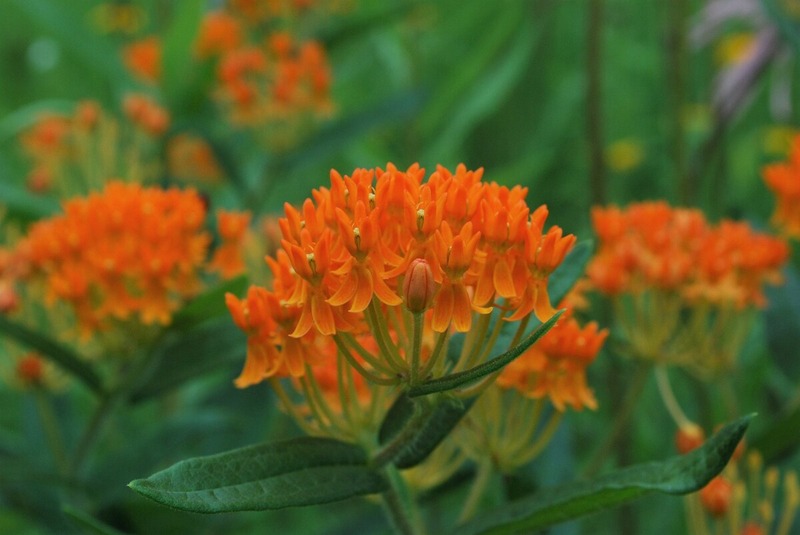
Want to have monarch butterflies flying around in your yard? Consider planting butterfly milkweeds — they are critical to these butterflies’ survival. You will also be helping the environment since their population has been in serious decline. These plants are also low-maintenance, beautiful, and will add a touch of color to your garden.
- Plant Type: Wildflower
- USDA Hardiness Zone: 3-9
- Sun: Full sun
- Soil: Clay, loam, sandy; well-drained
- Duration: Perennial
- Fragrance: Sweet, vanilla
- Bloom Time: Summer
- Water Needs: Low
- Mature Height: 1 to 2 feet
- Potential Hazards: Mildly toxic to humans and animals, but less so than its relative the milkweed
- Maintenance Needs: Low
3. Common Sunflower (Helianthus annuus)
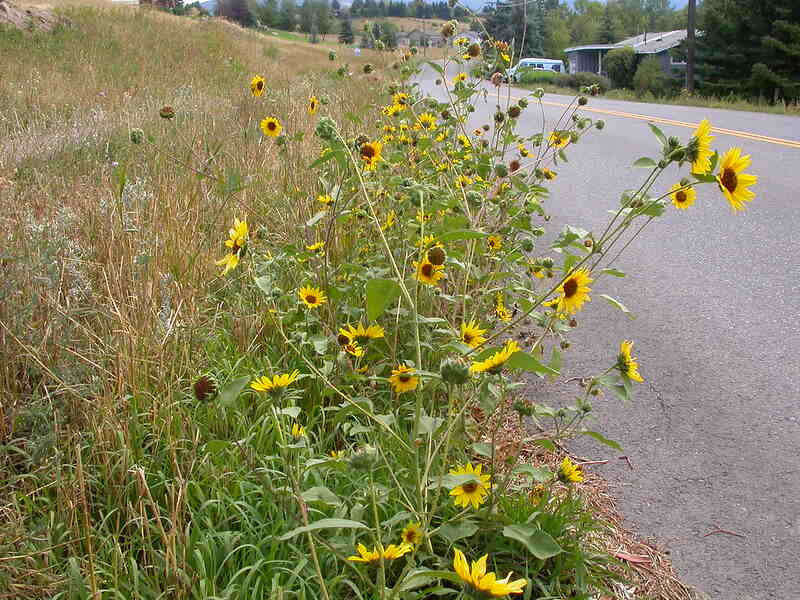
Sunflowers are not just a global icon of beauty; they’re also a staple of Nebraska’s agriculture, with around 50,000 acres dedicated to sunflower harvests in recent years. The state is home to nine native species of sunflower, each thriving in the local soil and climate. These flowers are known for their vibrant petals and multiple flower heads that sprout from each plant.
- Plant Type: Wildflower
- USDA Hardiness Zone: 2-11
- Sun: Full sun
- Soil: Well-drained, fertile, moist soils.
- Duration: Annual
- Fragrance: Delicate, vegetal
- Bloom Time: Late summer to early fall
- Water Needs: Low to moderate
- Mature Height: 3-10 feet
- Potential Hazards: None
- Maintenance Needs: Low
4. Wrinkleleaf Goldenrod (Solidago rugosa)
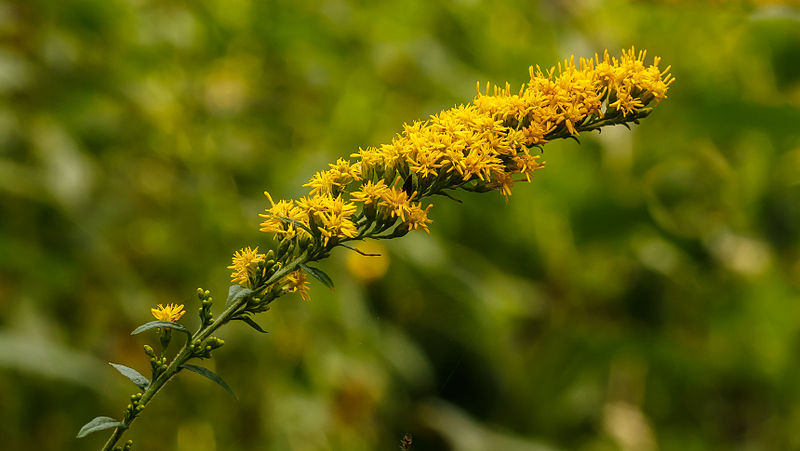
Wrinkleaf goldenrod is a charming native plant that’s as functional as it is pretty. Known for its small bright yellow flowers, this plant has distinct leaves with indentations that give it a “wrinkled” appearance, hence the name. This plant is also a major source of nectar for butterflies, wasps, bees, beetles, and other insects.
- Plant Type: Wildflower
- USDA Hardiness Zone: 4-8
- Sun: Full sun
- Soil: Clay, loam, sandy; moist but well-drained, slightly acidic
- Duration: Perennial
- Fragrance: None
- Bloom Time: Late summer to fall
- Water Needs: Moderate to high
- Mature Height: 3 to 5 feet
- Potential Hazards: None
- Maintenance Needs: Low
5. Aromatic Aster (Symphyotrichum oblongifolium)
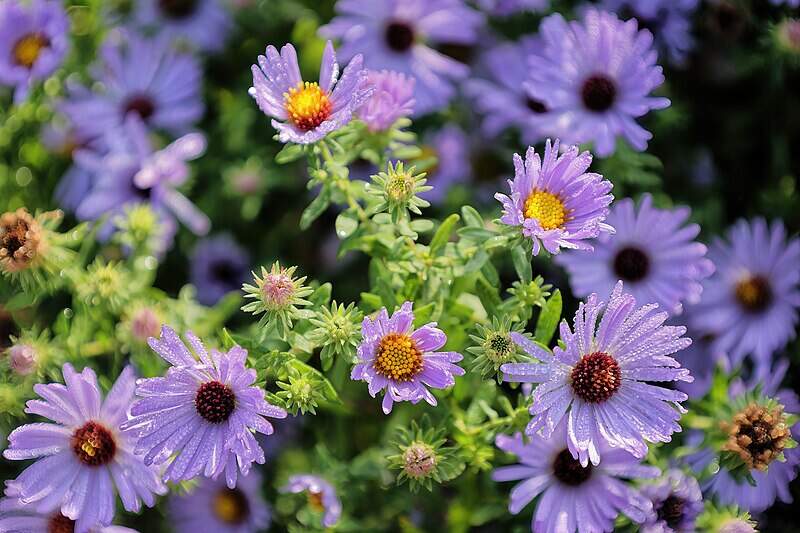
The name aster comes from the Greek word astron, meaning “star,” referring to the shape of the flower head. The flowers not only enhance the fall garden but also produce nectar for migrating butterflies and other beneficial insects. Some asters thrive in poor, dry soil, but others like their feet wet. There is an aster for almost any spot in the garden, from full sun to shade.
- Plant type: Herb (a plant that doesn’t develop woody tissue)
- USDA Hardiness Zone: 3 to 8
- Sun: Full sun
- Soil: Clay, loam, sand. Alkaline, neutral, acidic soil. Well-drained.
- Duration: Deciduous perennial
- Fragrance: Balsam-like aroma when flowers are crushed
- Bloom time: Late summer, fall
- Water needs: Low to moderate
- Mature height: 1 to 2 feet
- Potential Hazards: None
- Maintenance: Average. If the plant gets top-heavy, you can keep it thick by pruning it back by no more than half in June. After it goes dormant, wait to cut back to the basal rosette in late fall or early winter. Some support may be needed for taller plants.
6. Wild Indigo (Baptisia australis)

Wild indigo has a long history of being used to make a blue dye, with Native Americans doing that, and the settlers that followed. Though it has blue flowers, the dye is made from its sap. One thing to note is that the plant is toxic, and children are especially vulnerable. Toxicity will vary by the season of the year and a plant’s amount of growth.
- Plant type: Herb
- USDA Hardiness Zone: 3-9
- Sun: Full sun
- Soil: Loam, sand, well-drained soils
- Duration: Perennial
- Fragrance: None
- Bloom time: Late spring to early summer
- Water needs: Low to moderate
- Mature height: 3 to 4 feet
- Potential hazards: Toxic if ingested
- Maintenance: Low
7. Common Yarrow (Achillea millefolium)
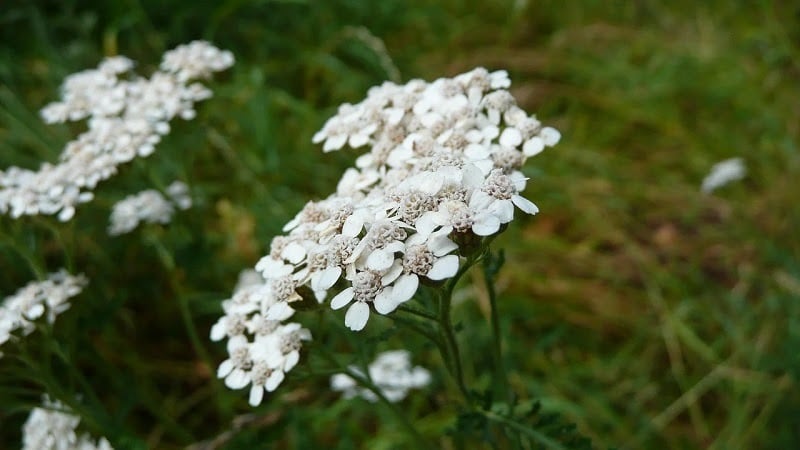
Common yarrow is known for its clusters of tiny, intricate flowers that lend a delicate texture to any garden. This plant is easy to care for and has low maintenance needs, thriving even in drought and heat conditions. However, to shield it from Nebraska’s famed wind, you might want to consider planting it in more sheltered places.
- Plant type: Herb
- USDA Hardiness Zone: 3-9
- Sun: Full to partial sun
- Soil: Well-drained soils; avoid rich, moist soils
- Duration: Perennial
- Fragrance: Spicey
- Bloom time: Summer
- Water needs: Low
- Mature height: 2-3 feet
- Potential hazards: Toxic to animals.
- Maintenance needs: Low. Regularly prune and deadhead.
8. Narrowleaf Coneflower (Echinacea angustifolia)
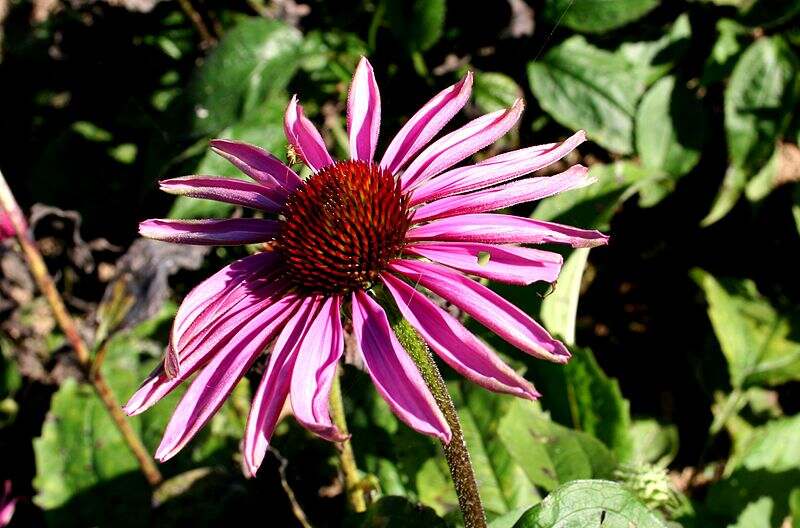
If you’re keen on building a pollinator garden, the narrowleaf coneflower should be on your list of plants to include since it is a magnet for bees and butterflies. This coneflower plays a crucial role in supporting local pollinator populations. Although this plant doesn’t look attractive as it grows in the wild, it looks strong and vibrant when taken care of in a garden.
- Plant type: Herb
- USDA Hardiness Zone: 3 to 8
- Sun: Full sun
- Soil: Dry; well-drained; clay, loamy, and sandy
- Duration: Perennial
- Fragrance: Light, sweet, honey-like
- Bloom time: Summer
- Water needs: Low
- Mature height: 1 to 2 feet
- Potential hazards: None
- Maintenance: Low
9. Purple Joe-Pye Weed (Eutrochium purpureum)
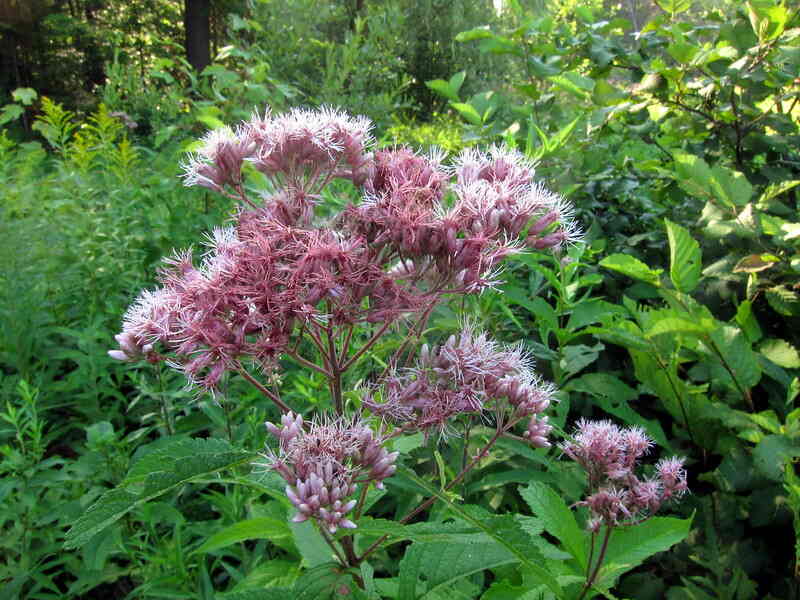
The purple Joe-Pye weed is a robust plant that produces large, dome-shaped clusters of pink-purple flowers that are a visual feast and a favorite among bees and butterflies. As the flowering season progresses, these blooms give way to seedheads, drawing in various birds that feast on them.
The name comes from Joseph Shauquethqueat, also known as “Joe Pye,” a Native American herbalist who lived in the Adirondack Mountains region in the 18th century and used his knowledge of the plant to treat illnesses, including typhoid fever.
- Plant type: Herb
- USDA Hardiness Zone: 3-9
- Sun: Full sun, partial shade
- Soil: Moist, well-drained soils
- Duration: Perennial
- Fragrance: Light vanilla
- Bloom time: Summer to early fall
- Water needs: Average
- Mature height: 5 to 7 feet
- Potential hazards: None
- Maintenance: Low
10. Rattlesnake Master (Eryngium yuccifolium)
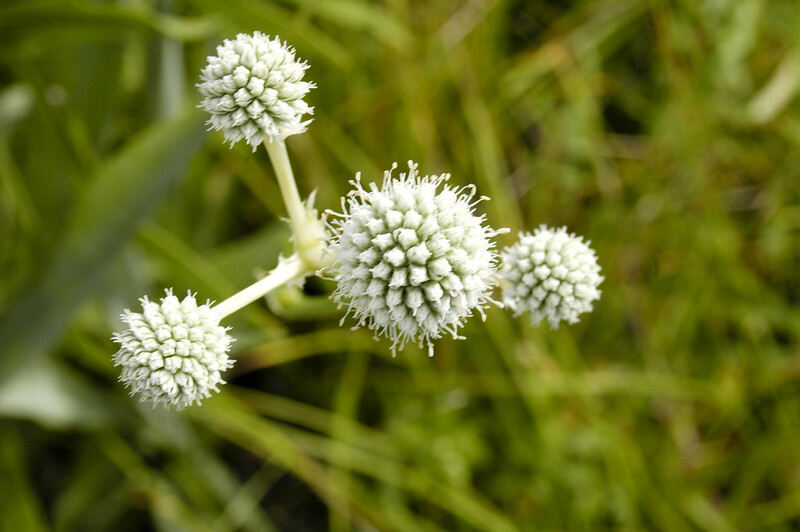
Eryngium yuccifolium came to be called “rattlesnake master” back in the day when people would spread its sap on their arms to discourage snakebites when they would use rattlesnakes on ceremonial occasions. These rattlesnake rituals were performed by both Native Americans and by settlers.
Scattered along the stem are tough, spiny leaves that make it difficult to walk through an area of these plants. Even cattle avoid walking through rattlesnake master plants. It makes for an excellent groundcover.
- Plant type: Herb
- USDA Hardiness Zone: 3-10
- Sun: Full sun
- Soil: Dry, well-drained
- Duration: Perennial
- Fragrance: Light vanilla
- Bloom time: Summer to early fall
- Water needs: Low
- Mature height: 4 to 5 feet
- Potential hazards: None
- Maintenance: Low
Best Ornamental Grasses for Nebraska
1. Blue Grama (Bouteloua gracilis)
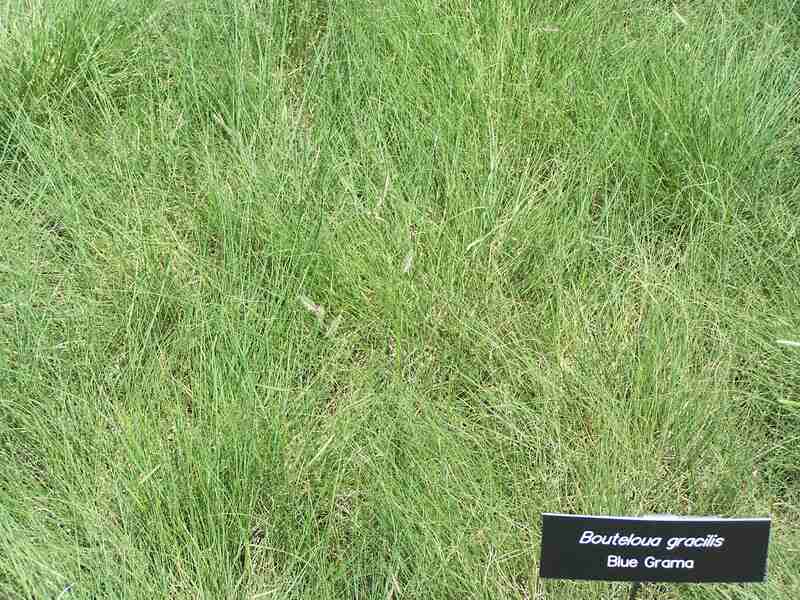
In the shortgrass native prairies of western Nebraska, blue grama was the dominant native grass. It is a grass that is being rediscovered as a turfgrass in some lawns across the country. Because it grows no more than two feet high and wide, it is also a popular selection for rock gardens and backyards. As a turfgrass, it should be regularly mowed to two inches high.
- Plant type: Ornamental grass
- USDA Hardiness Zone: 3-10
- Sun: Full sun
- Soil: Dry, well-drained
- Duration: Perennial
- Fragrance: None
- Water needs: Low
- Mature height: 1 to 2 feet
- Potential hazards: None
- Maintenance: Low
2. Little Bluestem (Schizachyrium scoparium)

Little bluestem stems are blue-green early in the year, then turn a lovely mahogany-red with white seed tufts in the fall, a color that remains in winter. It succeeded as a native grass for a reason that is a concern if you have a small garden: Its seeds spread and take over an area.
- Plant type: Ornamental grass
- USDA Hardiness Zone: 3 to 9
- Sun: Full sun
- Soil: Dry to moist, well-drained soils
- Duration: Perennial
- Fragrance: None
- Water needs: Low to moderate
- Mature height: 2 to 4 feet
- Potential hazards: None
- Maintenance: Low
3. Indian Grass (Sorghastrum nutans)
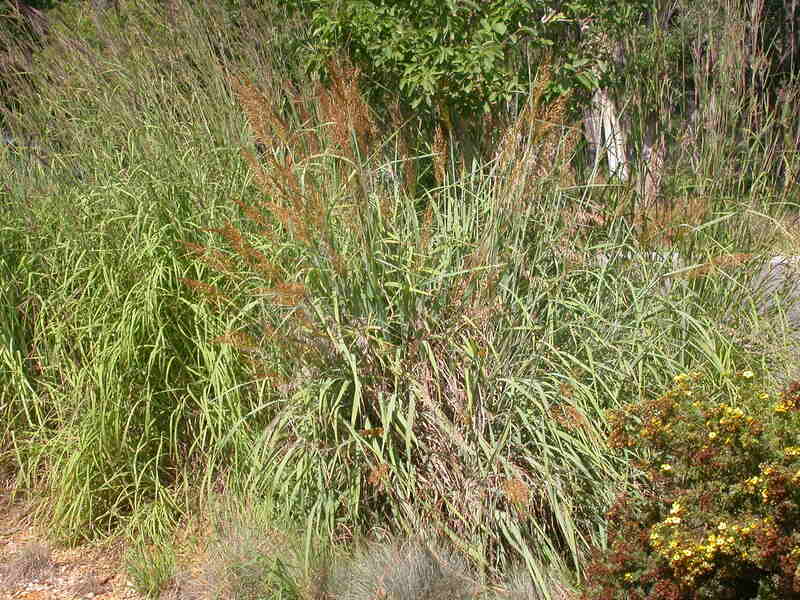
Indian grass is a standout feature in any native garden, celebrated for its tall, showy, and feathery panicles that rise above the foliage. These plumes sway in the breeze, adding movement and texture to your landscape. However, this plant is dangerously vulnerable to fire; it might not be wise to plant it near a house or building.
- Plant Type: Ornamental grass
- USDA Hardiness Zone: 4 to 9
- Sun: Full sun
- Soil: Clay or shallow rocky and well-drained
- Duration: Perennial
- Fragrance: None
- Water Needs: Low
- Mature Height: 3 to 5 feet
- Potential Hazards: Very flammable
- Maintenance Needs: Low
4. Prairie Dropseed (Sporobolus heterolepis)
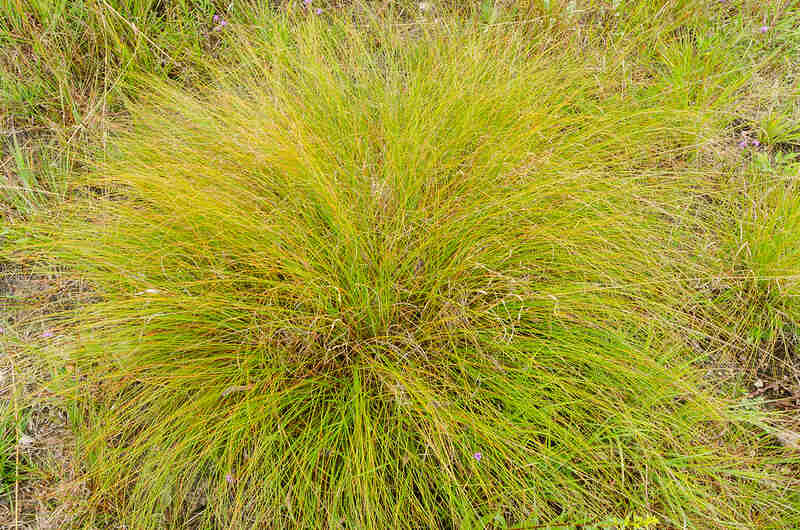
Prairie dropseed received its name for the most basic of reasons: It grows in the prairie and drops its seeds to the ground (when they mature). It does not flatten in the snow, so it is more noticeable in the winter than other plants. In addition, birds feed on its seeds and deer feed on the leaves.
- Plant type: Ornamental grass
- USDA Hardiness Zone: 3-9
- Sun: Full sun
- Soil: Chalk, clay, loam, sand; well-drained soils
- Duration: Perennial
- Fragrance: Coriander to buttered popcorn
- Water needs: Low
- Mature height: 2 to 3 feet
- Potential hazards: None
- Maintenance: Low
5. Switchgrass (Panicum virgatum)
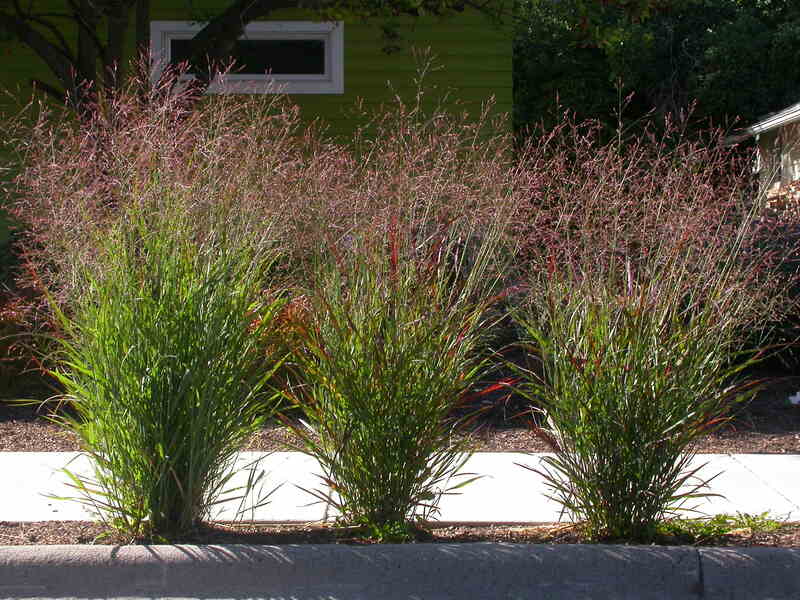
Switchgrass is becoming a popular ornamental grass for privacy. It withstands flooding and droughts, doesn’t succumb to air pollution, and resists deer grazing. Plus, in late summer, the foliage is topped with flower panicles that resemble a red-purple cloud, which some find attractive, if not ethereal.
- Plant type: Ornamental grass
- USDA Hardiness Zone: 5-9
- Sun: Full sun, partial shade
- Soil: Sandy, loamy, clay, limestone-based; well-drained
- Duration: Perennial
- Fragrance: None
- Water needs: Moderate
- Mature height: 3 to 6 feet
- Potential Hazards: It is flammable, so you should keep it away from buildings.
- Maintenance: Low
Why Use Native Plants?
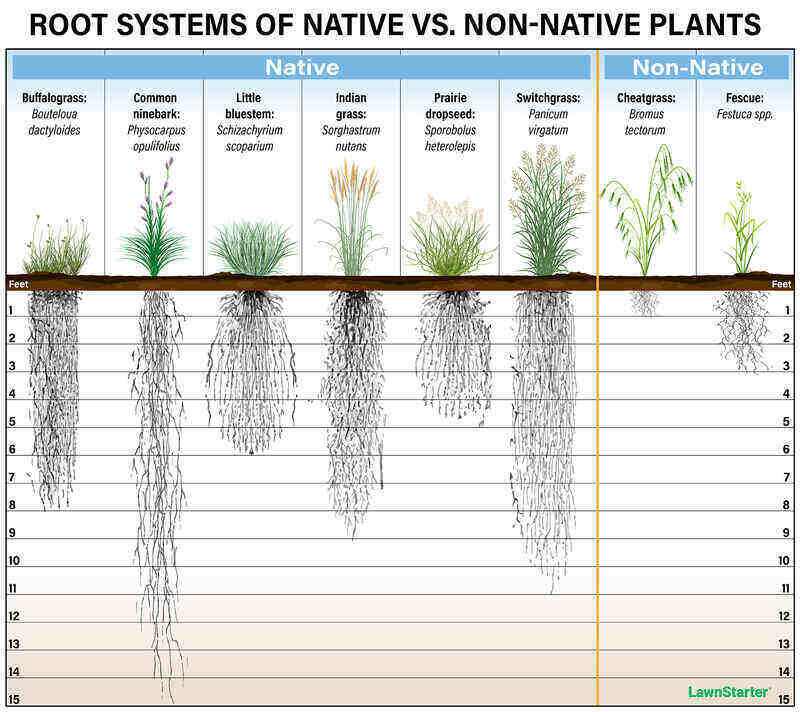
There are several benefits to using native plants in your landscape:
- They are low maintenance. It is how they survived before any humans arrived.
- They’re adapted to Nebraska: Native plants have roots that grow well in the type of soil found in the state, so they don’t need additional amendments.
- They resist Nebraska diseases. Native plant species survived by being able to fight off the diseases that strike in Nebraska. They’re also usually more resistant to common lawn and garden pests in Nebraska.
- They limit soil erosion with their deeper root systems.
- They improve the quality of water by filtering chemicals and impurities before they flow into creeks and rivers.
- They are pollinator-friendly, offering food and nesting places for birds, butterflies, bees, small mammals, and other animals.
- They need far fewer pesticides than introduced plants.
How to Choose Native Plants for Your Landscape
Nebraska is blessed with a rich diversity of native plants, offering endless possibilities for enhancing your landscape. Here are a few tips to help you choose the best native plants for you:
- Select the right plants for the site: Consider your yard’s soil type (whether it’s clay, loam, or sandy) and take into consideration the amount of sunlight your yard receives.
- Check out the dangers: Find out if a plant might be toxic to humans or to animals (such as a dog you let romp). Some plants, especially grasses, are highly flammable; you should check on that before putting one next to your house.
- Acquire the plants properly. Finding a plant in the wild and digging it up will deplete the areas of the seeds the plants need to be self-sustaining. Go to a nursery to get your native plants, and try to find a nursery that gets the seeds it uses from places that give back to conservation efforts in their area.
Cost of Installing Native Plants
If you want to use professional landscapers, here is a guideline on what you can expect the cost for landscaping in Nebraska to be:
- $650 to $3,000 for planting flower beds
- $25 to $3,000 for planting trees and bushes
How to Install Native Plants
If you decide you want to install native plants as a DIY project, you should:
- Find out what kind of soil you have. Have a soil test before planting anything.
- Decide if you want to attract wildlife, then what wildlife (such as pollinators), to be able to find the right native plants to attract those creatures.
- Prepare the ground. Remove any vegetation.
- Make the soil better. You might add compost or peat moss. You don’t need to add fertilizer; native plants usually don’t need it.
- Choose seeds or potted plants. Decide which you want to use to create your garden. Seeds will take longer to look good, but plants cost more.
- Planting is just the start. For example, weeding will be needed for a year or two. Check out our guide on the Noxious Weeds in Nebraska to know how to deal with each one of them.
FAQ About Native Plants in Nebraska
What Are the Native Trees to Plant in Nebraska?
Only 3% of Nebraska was ever forested, but there are some native trees you might want to plant:
- American plum (Prunus americana): Also known as wild plum, the fruits are about one inch around, smell of sweet grape, and have been used in jams and jellies for as long as there have been people.
- Black willow (Salix nigra): Wildlife flock to it for food and habitat.
- Boxelder maple (Acer negundo): It got its name from its use since the earliest days to make boxes. Its sap is sweet, allowing it to be made into maple syrup.
- Bur oak (Quercus macrocarpa): Grows best on bottomlands. Keep deer away from this tree when it is young.
- Cottonwood (Populus deltoides): State tree. Found near rivers, streams, and lakes.
- Eastern red cedar (Juniperus virginiana): Has the highest survival rate of any conifer planted in Nebraska
- Hackberry (Celtis occidentalis): Although it is considered to be an ugly tree, a single row can serve as a windbreak against even the prominent Nebraska winds.
What Are the Toxic Native Plants in Nebraska?
From our list of the best native plants for Nebraska, the following are mildly toxic or toxic:
- Dotted blazing star (mildly toxic)
- Butterfly weed (mildly toxic)
- Blue false indigo (toxic)
- Common yarrow (toxic)
What is the Best Grass Type for Nebraska?
The best grass types for Nebraska generally include cool-season grasses like Kentucky bluegrass and tall fescue, due to their resilience in the cooler temperatures. However, buffalograss, a warm-season grass known for its cold tolerance, is also used in the state.
When to Call a Professional
Adding native plants to your yard or a landscaping project can be a fun DIY project, but if you need more help, talk to a Nebraska landscaping expert if you need help selecting plants for your landscape. Whether you’re in Omaha, Lincoln, Elkhorn – or anywhere else in the great state of Nebraska – LawnStarter can connect you with passionate lawn care and landscaping pros with helpful advice.
Main Image Credit: Pixabay

